DROPS Big Merino
Superwash treated extra fine merino wool
from:
4.10€
per 50 g
Content: 100% Wool
Yarn Group:
C (16 - 19 stitches)
/ 10 ply / aran / worsted
Weight/length: 50 g = approx 75 m
Recommended needle size: 5 mm
Knitting tension: 10 x 10 cm = 17 sts x 22 rows
Care: Machine wash on gentle cycle 40°C / Don’t use fabric softener / Dry Flat
Superwash: yes
Made in: EU
Raw material origin: Wool from South America
This yarn has an Oeko-Tex® certification (certificate number 25.3.0110), Standard 100, Class I from the INNOVATEXT TEXTILE ENGINEERING AND TESTING, HUNGARY. This means that is has been tested for harmful substances and is considered safe in human-ecological terms. Class I is the highest level, and it means the yarn is suitable for baby articles (ages 0-3).
Spun from multiple thin strands of 100% extra fine merino wool, which give the yarn its elasticity - DROPS Big Merino’s main characteristics are its softness, volume, elasticity and even result, which makes it ideal for knitting structured patterns such as cables.
It is this special construction of the yarn that makes it extra important to use the correct tension in your project, so use a tight tension rather than a loose one. DROPS Big Merino is also superwash treated and therefore machine washable and suitable for everyday use; but when washing your garments you must take extra care and follow closely the care instructions.
DROPS Big Merino is spun from fibers from free-range, mulesing free animals from South America and is Oeko-Tex Standard 100 certified.
Read more about our products' sustainability here
Please be aware that the colours shown may vary from screen to screen in the same way that shades may vary slightly from dye lot to dye lot.
How do I care for this yarn?

Machine wash on gentle cycle 40°C / Don’t use fabric softener / Dry Flat
All our super wash treated merino yarns should be washed in the machine, using a gentle cycle program. That being said, there are a few more tips that are extremely relevant when it comes to caring for this yarn:
- Machine wash - separately - using a gentle cycle program at 40ºC, with a light centrifugation (about 800rpm). Only use detergents without enzymes and optical brighteners.
- NEVER use fabric softener (the wool fibers become too soft and can slide apart).
- NEVER leave the garment to soak/wet in the washing machine for a long period of time.
- To dry the garment, shape it and lay it flat - do not hang - ideally on a warm bathroom floor or on top of a drying rack in a room with good air circulation. Never dry the garment in direct sunlight.
- Never iron the garment directly. Use always a damp cloth between your steaming iron or regular iron and the garment.
Note: If you are washing a project made with this yarn combined with another, the general guideline is to follow the washing instructions for the most delicate of the yarns you are working with.
Do you have a question about this yarn?
See a list of frequently asked questions (FAQ) about our yarns.
1) What type of fibers make the DROPS yarns?
Yarn can be made from a large number of natural and synthetic fibers. DROPS carries mainly yarns made from wool, cotton, alpaca, linen, mohair and silk. Each fiber type has its own qualities, and they are often mixed to take advantage of the best properties of each one. Coarse yarn has the advantage of being stronger and more durable, and finer fibers offer more softness and comfort. Here a bit about the main fibers we carry:
Alpaca:
Alpaca fleece is the natural fiber harvested from an alpaca, and it is similar in structure to sheep wool fiber. Its softness comes from the small diameter of the fiber, similar to merino wool. It is a soft, durable, luxurious and silky natural fiber. Yarn made from alpaca fibers does not felt or pill easily, and it can be light or heavy in weight, depending on how it is spun. While similar to sheep’s wool, it is warmer, not prickly, and has no lanolin, which makes it hypoallergenic. Alpacas come in 22 natural colors, with more than 300 shades from a true-blue black through browns-black, browns, white, silver and rose-greys.
Mohair:
This fiber comes from the Angora goats, and it's considered a luxury fiber. Mohair yarn is warm as wool, but much lighter in weight; it is durable, dyes well and does not felt easily. Mohair fibers have also a distinctive luster created by the way they reflect light. Despite being a hard fiber, mohair is usually spun into a very fluffy yarn, resulting in airy and lustrous garments.
Wool:
The wool fibers come from the skin of sheep and are relatively coarse fibers. Two striking characteristics of wool are its susceptibility to heat and its felting property, which is caused by the scales on the surface. Depending upon the breed of sheep, the appearance of the wool varies.
Wool from Merino sheep is considered the finest type of wool, having as characteristics that is finely crimped and soft. All the Merino wool in the DROPS yarns has its origins in South America, coming from sheep that have not been subject to Mulesing.
Pure new wool is wool made directly from animal fleece, and not recycled from existing wool garments.
Machine washable wool is wool treated chemically to minimize the outer fuzzy layer of the fibers, and be therefore fitable for machine wash (see Superwash).
Silk:
The silk fiber is a fine continuous fiber produced from the cocoon of a moth caterpillar known as the silkworm. While silkworm is cultivated, the wild or tussah silk is obtained from uncultivated silkworm cocoons. Silk fiber is one of the strongest natural fibers and makes a wonderful knitting yarn. It blends really well with other fibers, especially wool. Silk also dyes beautifully with natural dyes.
Vegetable fibers:
There are several varieties of vegetable fibers, found in the cell walls of plants or vegetables. Of all the varieties, two are recognized as major knitted or textile fibers. They are cotton and linen.
Cotton is the fiber surrounding the seeds in a cotton pod, and it is almost pure cellulose. Cotton is usually white in color but there are green and brown varieties as well. The cotton fiber is most often spun into yarn or thread and used to make a soft, breathable textile that is good for summer clothing and accessories, making a weaker yarn than silk or linen but stronger than wool.
Mercerized cotton is cotton that has been through a mercerization treatment. This treatment gives cotton fabrics and threads a lustrous yarn that is more lustrous than conventional cotton. It is also stronger, takes dye a little more readily, makes the yarn more resistant to mildew and reduces lint. It also may not shrink or lose its shape as much as "regular" cotton.
Linen is a fiber derived from the stalk of the flax plant that is durable and stronger than any other fiber. The linen fiber is relatively soft, straight and lustrous and becomes more beautiful with age. Linen is more comfortable to wear in hot temperatures than cotton, due to the fact that it absorbs moisture better and dries more quickly.
Other materials used in our yarns include synthetic fibers such as acrylic, viscose, polyamide (nylon) and polyester. These fibers are used mostly to give strength to a yarn (like our sock yarn, DROPS Fabel) or a special kind of structure (like our blown yarn, DROPS Air).
The polyamide fibre, commonly known as nylon, is very strong, durable, lightweight, easy to care for (can be machine washed and dried), and elastic, which makes it perfect for blending with other fibres to produce hard-wearing yarns like sock yarn.
Compared to polyester, polyamide is softer and more flexible, but it also absorbs more water and dries slower.
3) What type of information can I find on the DROPS yarn labels?
All DROPS yarn labels include information about fiber content (wool, cotton, etc.), weight in grams and ounces, length in meters and yards, washing instructions and symbols (explained here), color number, dye lot number and yarn group information.
4) What are the DROPS yarn groups?
All DROPS yarns are classified into 6 different thickness groups (A to F). Yarns in a same group have similar knitting tension/gauge, and can therefore be interchanged in patterns; however the length may be different, so when substituting always calculate the amount of meters/yards needed for the pattern to know the amount of yarn you need to get.
5) Can I use a different yarn than the one mentioned in the pattern?
Yes, as long as the yarn can be worked in the same knitting tension/gauge. Always swatch to make sure you get the same number of stitches in width and rows in height as given in the pattern.
Remember that different yarns with different textures, will give the garment different looks. The yardage/length may also be different, so when substituting always calculate the number of yards needed, in order to know the amount of yarn you need.
Read more about how to calculate the amount of an alternative yarn - and how to replace 1 thread of a yarn with 2 or more of another, here.
6) What does it mean when a yarn is “Superwash”?
A superwash wool is a special wool product that has been treated or processed in a way that allows it to be machine washable. Many people are afraid to work with wool because it is so easy to shrink (though some shrink wool on purpose) and superwash wool can allow them to work with great fibers without worry. (Read more here).
7) What does “Oeko-Tex® certified” means?
The Oeko-Tex® Standard 100 was introduced at the beginning of the 1990s as a response to the needs of the general public for textiles which posed no risk to health. The Oeko-Tex® Standard 100 is a globally uniform testing and certification system for textile raw materials, intermediate and end products at all stages of production. The test for harmful substances comprise substances which are prohibited or regulated by law, chemicals which are known to be harmful to health, and parameters which are included as a precautionary measure to safeguard health.
For more info go to www.oeko-tex.com
10) How accurate are the colours on the shade cards online?
When obtaining images for the shade card, we do our best to achieve the highest level of color accuracy. Unfortunately, we cannot guarantee how images will appear on your computer screen. Every monitor displays color differently, some colors might look darker than they really are, and some colors might be more saturated on some screens. If you experience that many of the yarn colors looks different on your screen than the actual color of the skeins, you can adjust the setting on your monitor.
11) What is a micron? What does super fine / extra fine mean?
The fineness of yarn fibers is measured in microns (thousands of millimeters). Super fine alpaca wool is 26-28 microns. Fine merino wool is less than 21.5 microns and extra fine merino is under 19.5 microns. The less microns the softer and more delicate a quality can be, the more microns the more hard wear the quality will be.
The reason why the microns in a yarn’s fibers are important is that the yarn will eventually become something else, and how delicate or coarse a yarn is will determine in part what we use it for. That’s why we recommend the softest yarns (like DROPS Baby Merino) for baby clothing, or why we choose to use a more hard wear yarn like DROPS Snow, for a seating pad or slipper.
12) Why are the colours in my skeins of print yarn different?
The reason why two skeins of a same print yarn look different can be 1) that both skeins are part of different dye lots; 2) that the skeins have been dyed using a technique called "magic print" (the one used for example in DROPS Delight), which provides unique patterns and smooth colour transitions to each skein, meaning also that within one dye lot, lighter or darker varieties might appear. This is no fault or defect, but part of the yarn's character.
13) My store doesn’t have the colour I want, what can I do?
If your DROPS store doesn’t have the yarn colour you want, try contacting a DROPS Super Store (the ones with the golden badges) - they will make sure to get a hold of the colour even if they don’t have it in stock themselves. See a list of all DROPS stores here.
14) Where can I find a specific dye lot of a colour?
Always try contacting your DROPS store first. If they do not have the dye lot you want we recommend you to ask other knitters and crocheters in the DROPS Workshop in Facebook or Ravelry, which may have the dye lot in their stash and might be willing to part from it.
Yarn sheds because there's not enough twist to hold all of the fibers together. All yarns have excess fibers (from production) that might come off as lint or shedding, in varied degrees that depend on how the yarn is spun. Brushed yarns ("hairier" yarns) like DROPS Melody, have more of these loose fibers than other yarns, and therefore shed more. Shedding also depends on what is worn under or over the garment, and whether this pulls at the yarn fibers. It’s therefore not possible to guarantee that there will be no shedding.
Below are some tips on how to get the best result when working with hairier yarns:
- When the garment is finished (before you wash it) shake it vigorously so the looser hairs come off. NOTE: do NOT use a lint roller, brush or any method that pulls at the yarn.
- Place the garment in a plastic bag and put it in your freezer - the temperature will cause the fibers to become less attached to each other, and excess fibers will come off easier. Leave in the freezer for a few hours before taking it out and shaking it again.
- Wash the garment according to the instructions on the yarn label. Garments worked with hairier yarns usually need to be shaken once dry after washing, so that the hairs rise and any excess fibers can come off.
Pilling is a natural process that happens to even the most exclusive of fibers. It's a natural sign of wear and tear that is hard to avoid, and that is most visible in high friction areas of your garment like a sweater's arms and cuffs.
You can make your garment look as new by removing the pilling, using a fabric comb or a pill/lint remover.
How can I replace this yarn?
If you are looking to replace this yarn with another DROPS yarn, you can use another yarn within the same yarn group, or try our yarn converter!
Other yarns in Yarn Group C
Read more about replacing yarn.Have a problem with the DROPS yarn you purchased?
When you purchase yarn from the shade cards or patterns on our site, you are not buying directly from DROPS but from one of the hundreds of DROPS stores around the world. It is therefore important that you take contact with the DROPS store where you bought the yarn, and that you save the labels of all the skeins you purchased (they are your warranty).
The DROPS store you contact will assist you and escalate the claim if necessary. Find a list of DROPS stores here.
Comments / Questions (225)
![]() Loredana wrote:
Loredana wrote:
Buongiorno! Ho acquistato questo filato per realizzare un collo,purtroppo devo segnalare che parecchi gomitoli presentano uno o più nodi di giunzione.È ovvio vhe questo compromette il risultato finale,tanto più che si tratta di un colore chiaro. Loredana
10.11.2015 - 14:31
![]() Katharina Ejem wrote:
Katharina Ejem wrote:
Wird die Farbauswahl für dieses Garn erweitert? Auch ich suche Alternativen für Eskimo (ich nehme Big Merino dann doppelt), da mir Eskimo zu stark fusselt und auch leider bei Mützen/Schals etc. ganz schön am Kopf/Hals kratzt... Oder können Sie mir eine andere Alternative zu Eskimo empfehlen, die weniger kratzt und nicht so stark fusselt?
28.09.2015 - 20:50DROPS Design answered:
Liebe Katharina, für kratzempfindliche Personen ist Merino sicher die beste Wahl.
06.10.2015 kl. 08:23
![]() Yvonne wrote:
Yvonne wrote:
Hallo, ich habe schon ein paar Hausschuhe "Elfies" in Big Delight nach Eurer Anleitung gestrickt, ich würde sie gerne auch mit einem unifarbenem Garn stricken. Nun meine Frage kann ich es mit Big Merino versuchen und bleibt der Filzvorgang gleich - heißt einfach die selbe Anleitung gemäß Größe stricken? Oder gibt es für die Elfies noch ein besser geeignetes Garn?
14.09.2015 - 20:27DROPS Design answered:
Liebe Yvonne, Big Merino ist zwar als Garnalternative für Big Delight aufgeführt, eignet sich aber wegen der Superwash Ausrüstung nicht zum Filzen. Ich würde Ihnen als einfarbige Variante Nepal empfehlen.
23.09.2015 kl. 07:19
![]() Berit wrote:
Berit wrote:
Hei, er dette garnet egnet for toving?
14.09.2015 - 12:32DROPS Design answered:
Hei Berit. Nei, det er Superwash behandlet og kan derfor ikke toves.
14.09.2015 kl. 13:58
![]() Arianne wrote:
Arianne wrote:
Thank you so much for sharing that you source your merino from countries that do not practice mulesing. It means so much to me, and now I can purchase your lovely wools without worry! I commend you for your kindness and wish that all yarn suppliers shared your high ethical standing! Thank you again :)
23.08.2015 - 08:46Orsi wrote:
Hi! I've made a hat out of this yarn and I really like how it turned out, so I decided to knit a sweater with it. I've just bought the necessary yarn, but I'm shocked at reading so many comments saying that the yarn stretches so much when wet and that projects loose shape. What is the best way to avoid this?
30.04.2015 - 14:45DROPS Design answered:
Dear Mrs Orsi, Make sure that you knit with the correct tension and rather use a tight tension, than too loose. You can first knit a swatch and wash it (read carefully all washing instructions on label + here) to check your measurements. Happy knitting!
30.04.2015 kl. 16:30
![]() Marion wrote:
Marion wrote:
Bonjour, sur l'image où l'on voit une pelote marron à gauche et une autre plus claire au dessus, s'agit-il de la couleur beige ou marbre? Merci pour votre aide. Marion
23.04.2015 - 16:12DROPS Design answered:
Bonjour Marion, les photos ont été modifiées mais il pourrait s'agir de la grise (02) - pour toute aide au choix d'une couleur, pensez à contacter votre magasin DROPS. Bon tricot!
28.04.2015 kl. 10:39
![]() Lina wrote:
Lina wrote:
Laine très douce ne pique pas et tres agreable à tricoter. Le rendu est impeccable. j'adore la couleur, amethyste. Tres contente de mon achat.
08.04.2015 - 08:43
![]() Doris wrote:
Doris wrote:
Pullover mit 4,5er Nadel fest gestrickt, dann im Wollwaschgang in der Maschine gewaschen, das Ergebnis ist super: wunderschön weiches Garn mit gleichmäßigem Maschenbild. Unbedingt vorher eine Maschenprobe machen und diese waschen und nach dem Trocknen die Maschen und Reihen auszählen, dann gibts kein Problem mit Merinogarnen, alles behält seine Form und man hat viel Freude an dem gestricktem Teil.
04.02.2015 - 19:37
![]() Doris wrote:
Doris wrote:
Schönes, weiches Garn. Ich habe die Maschenprobe mit 5er Nadel genau erreicht. Nach Waschen und anschließendem Trocknen der Maschenprobe, waren es dann allerdings 15 statt 17 Maschen pro 10cm. Stricke jetzt mit 4,5 Nadel (obwohl ich fest stricke), damit der Pullover nach dem ersten Waschen nicht zum Sack wird.
19.01.2015 - 17:31
![]() Bernabé Martine wrote:
Bernabé Martine wrote:
Désireuse de faire une écharpe en big mérinos, je voulais savoir si je pouvais la travailler avec des aiguilles n° 10 sans effet "filet de peche". Par avance merci
08.01.2015 - 08:05DROPS Design answered:
Bonjour Mme Bernabé, DROPS Big Merino se tricote habituellement en 5 - des aiguilles 10 donneront un effet très aéré si vous tricotez avec 1 seul fil, essayez avec le fil en double (= 2 fils tricotés ensemble) pour avoir une équivalence au groupe E comme Eskimo qui peuvent se tricoter en 10. Voir aussi ici et là. Bon tricot!
08.01.2015 kl. 10:43
![]() Gemma wrote:
Gemma wrote:
Buongiorno, ho usato questo filato per confezionare un sacco nanna da regalare.E' stato piacevole lavorare, perchè la lana è molto morbida e le trecce risaltano davvero. Unico appunto: all'interno dei gomitoli c'erano diversi "nodi", è stato antipatico dover unire sempre i fili. Un gomitolo dovrebbe essere intero, secondo me.
05.01.2015 - 18:50
![]() Darya wrote:
Darya wrote:
I made a hat with this wool and it did feel lovely while I was knitting, but after that I washed it (I always do so) and I was shocked when in a minute my hat stretched and totally used it's shape. Is it a common thing with this yarn? Really disappointed at the moment as three days of work are just ruined in a second :((((((((
04.01.2015 - 00:37DROPS Design answered:
Dear Darya, Remember to knit with the correct tension and rather use a tight tension than too lose - remember to make sure you follow the general instructions for washing - experience shows that washing with washmachine helps to avoid from stretching - and remember to always leave the garment drying flat on the final measurements. Happy knitting!
05.01.2015 kl. 10:02
![]() Renate Brenninger wrote:
Renate Brenninger wrote:
Wieviel Garn braucht man für eine damen Jacke mittellang mit Ärmel in 40/42 ? DANKE
16.12.2014 - 16:12DROPS Design answered:
Liebe Renate, bitte suchen Sie in unserer Musterdatenbank ein entsprechendes Modell. Der Verbrauch ist abhängig vom Schnitt und ob ein Muster gestrickt wird.
23.12.2014 kl. 07:34
![]() Sa Ri wrote:
Sa Ri wrote:
Ich bin begeistert von der Qualität dieses Garns. Es lässt sich wunderbar verarbeiten, hält was es verspricht und ist angenehm zu tragen, auch bei Kindern. Doch Leider lässt die Farbpallette zu wünschen über. Sind weitere Farben geplant? Ähnlich dem Merino Extra Fine? Pink und Gelb wäre toll. Vielen Dank und Liebe Grüße
06.12.2014 - 00:35
![]() Kristina Fahlen wrote:
Kristina Fahlen wrote:
En fråga....Jag har hittat en kofta där det ska vara stickor nr 6 o 16 maskor o 20 varv....hur blir det om jag stickar i detta garnet som 17 maskor o 22varv o stickor 5,5....kan inte tänka...tacksam för svar...
15.11.2014 - 10:09
![]() Marit Henningsen wrote:
Marit Henningsen wrote:
Hvor mange knuter må jeg forvente å finne i nøstene? Jeg har nettopp åpnet første nøste og har etter å ha brukt 20g har jeg kommet over fire knuter...
16.10.2014 - 23:31DROPS Design answered:
Hej Marit, selvfølgelig skal der ikke være 4 knuder i de første 20g. Der må være sket noget i maskineriet i det parti som nøglet er spundet op af. Tag kontakt med butikken hvor du har købt garnet og få nøglet byttet.
17.10.2014 kl. 14:25
![]() Ázbej Sándorné wrote:
Ázbej Sándorné wrote:
Hány gombolyag kell egy 40-es kardigánhoz?
11.10.2014 - 16:27DROPS Design answered:
Kedves Ázbej Sándorné, a szükséges fonal mennyisége az elkészíteni kívánt darab fazonjától függ. Javaslom, hogy keressen a mintatárban hasonló fazont, és az ott megadott mennyiség alapján számoljon, vagy kérjen tanácsot az üzletben.
14.04.2017 kl. 13:20
![]() Grete Vestergaard wrote:
Grete Vestergaard wrote:
Jer har lige strikket en trøje af 18 nøgler Big Merino og aldrig før er jeg blevet så skuffet over noget garn. Det var lækkert at strikke af og jeg strikkene det til den faste side som I anbefalede og vaskede det også præcis som I angav, jeg så desværre først andres dårlige erfaring med garnet efter købet, så derfor var jeg Extreme opmærksom på strikkefastheden og vask. Trøjen er blevet MEGET større og allerede fnuldred efter første vask. Jeg føler min virkelig snydt: (
19.09.2014 - 18:27
![]() Uschi Duttlinger wrote:
Uschi Duttlinger wrote:
Hallo liebes Taem. Möchte Tuch und Mütze stricken mit Big Merino obwohl DROPS Eskimoangegeben ist. ANTWORT: Liebe Uschi, dann müssen Sie Big Merino doppelt verstricken, da es zu einer anderen Garngruppe gehört (aber 2 x Garngruppe C ergibt Garngruppe E, siehe Tabelle)
04.09.2014 - 11:43
![]() LEFEBVRE wrote:
LEFEBVRE wrote:
Laine très douce qui peut convenir aux peaux sensibles comme celle des bébés. J'ai pris le beige et je ne suis pas déçue, il est clair (j'avais peur que ce ne soit trop foncé...). Je ne regrette pas cet achat. Commandé chez Luce Laine et Tricot et franchement livraison ultra-rapide, très sérieux, envoi soigné.
30.06.2014 - 14:11
![]() PIlar Tielve wrote:
PIlar Tielve wrote:
Durante meses he tejido un abrigo para bebe con esta lana. Una vez acabado estaba preciosos pero antes de entregárselo al bebe decidí darle un pequeño lavado. Lo hice a mano con agua fría y con un poco de detergente especial para ropa delicada. Fue meterlo en el,agua y cuadruplicar su tamaño. El disgusto que tengo es importante.
09.06.2014 - 00:21
![]() Jane wrote:
Jane wrote:
Jeg er veldig glad i dette garnet, godt å strikke med og med pinne 4,5-5 går det fort. Jeg syntes ikke klærne sterkker seg og blir større i vask, så lenge jeg former tøyet når det er vått og tørker det flatt. Kunne ønske det fantes i mange flere farger.
10.04.2014 - 10:28
![]() Lise Blomquist wrote:
Lise Blomquist wrote:
Jeg har som andre her haft den oplevelse, at en strikket trøje er blevet meget længere ved vask, fordi garnet åbenbart er særdeles elastisk. Jeg mener, banderolen bør indeholde bedre oplysninger om dette, så man kan holde sig fra garnet til visse formål.
08.04.2014 - 13:06






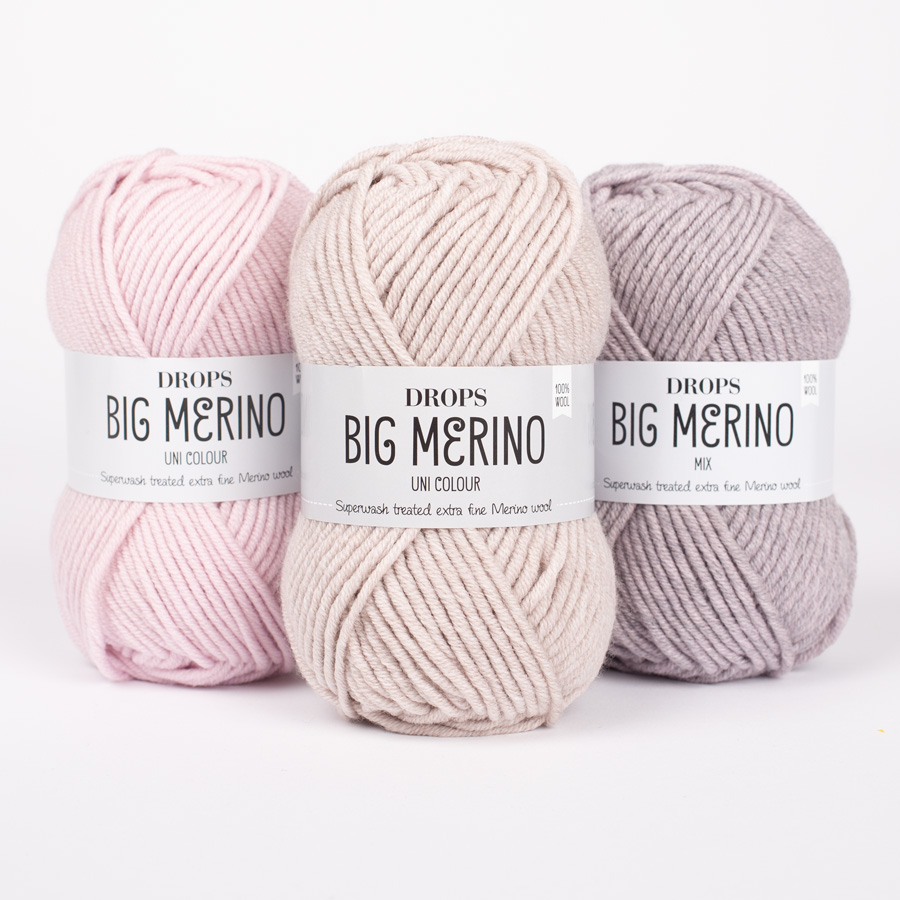
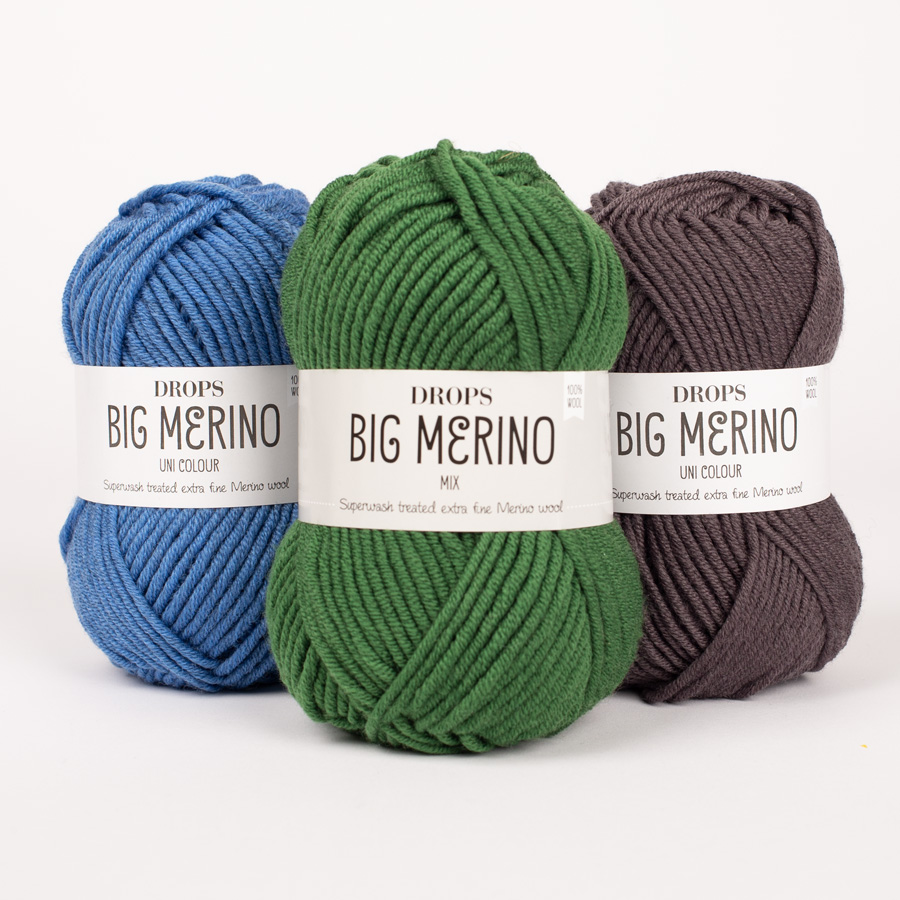

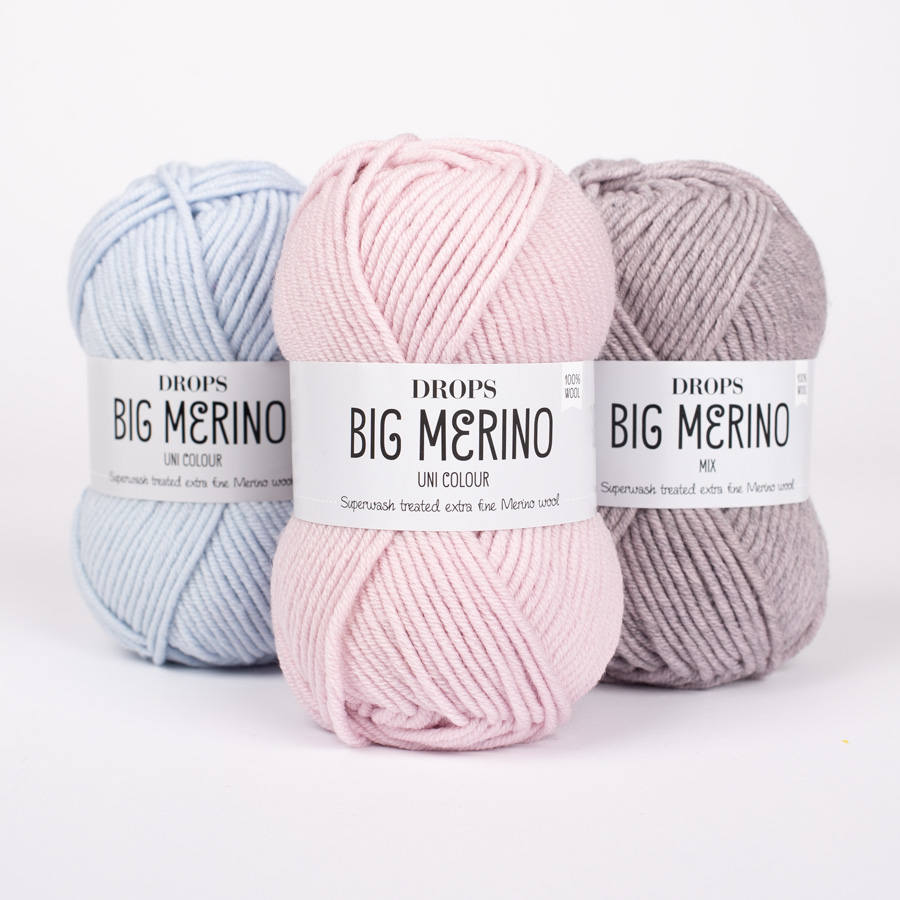
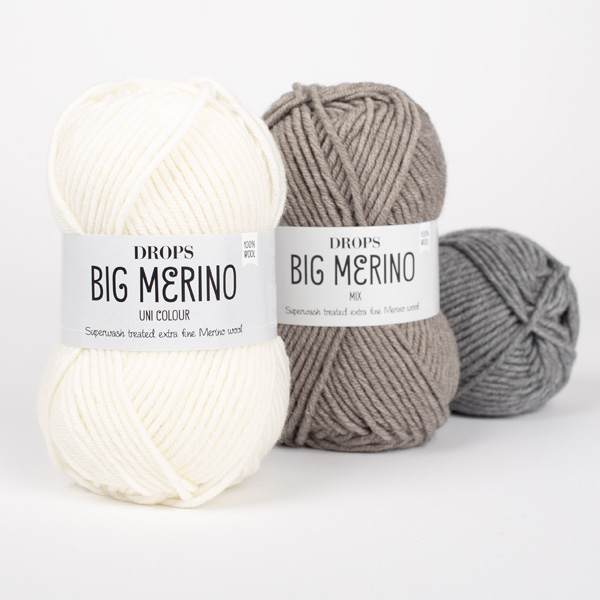
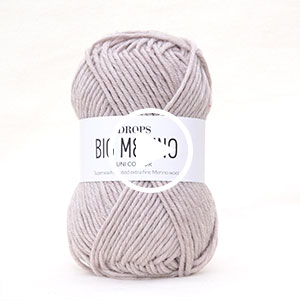

































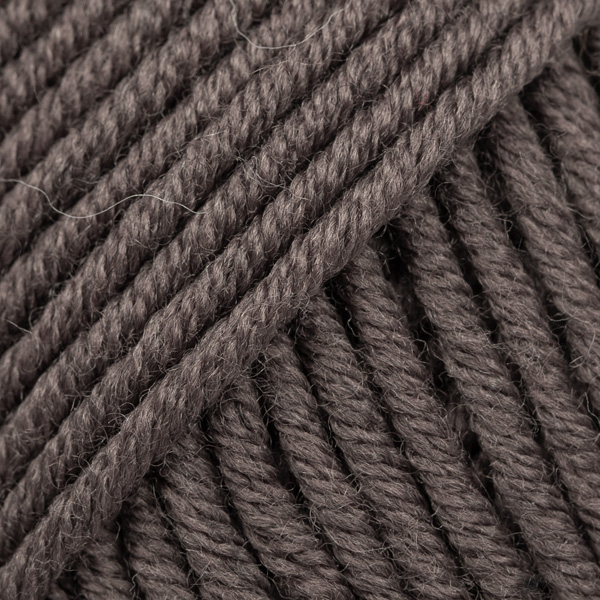













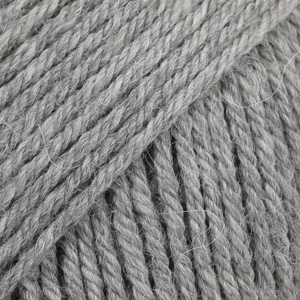










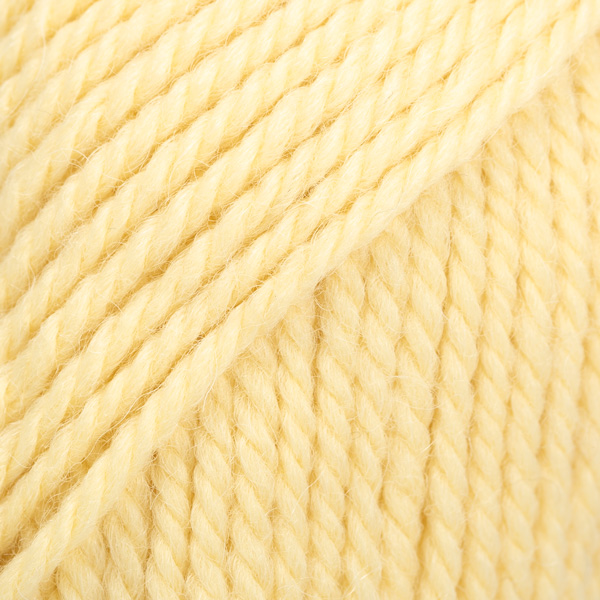





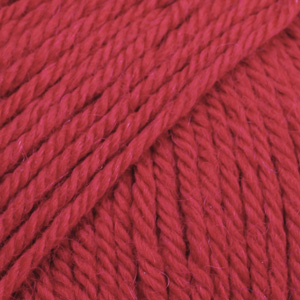





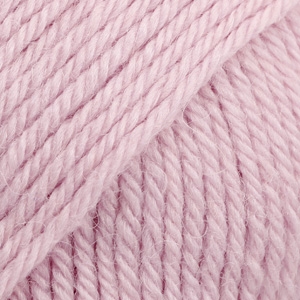
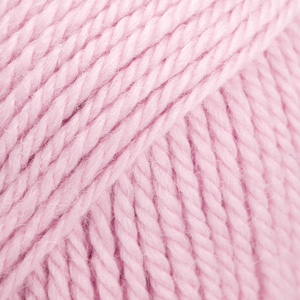

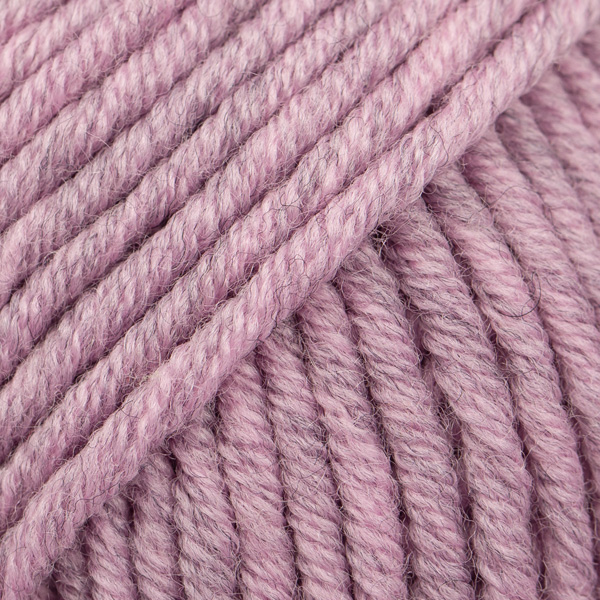

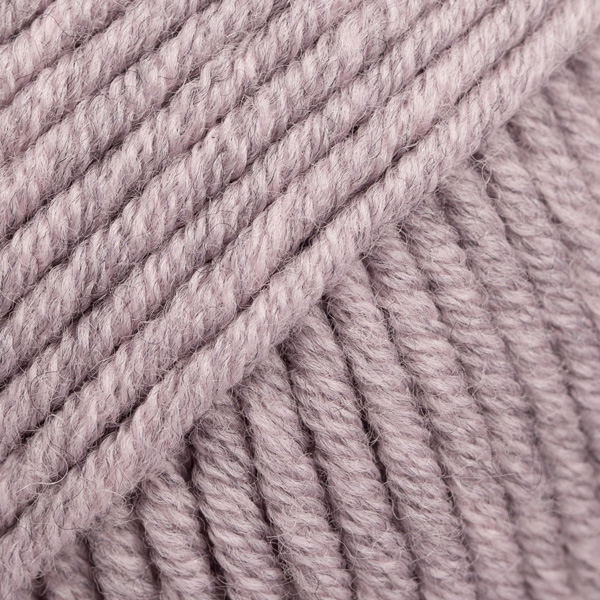






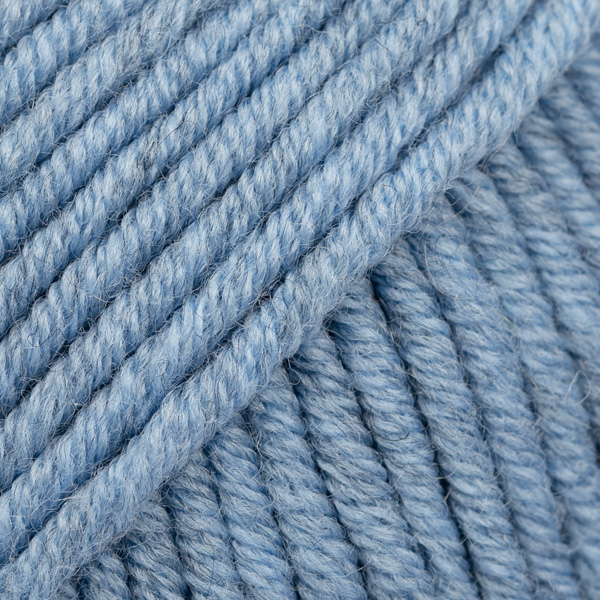

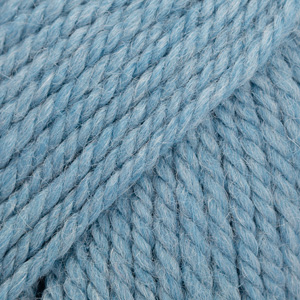


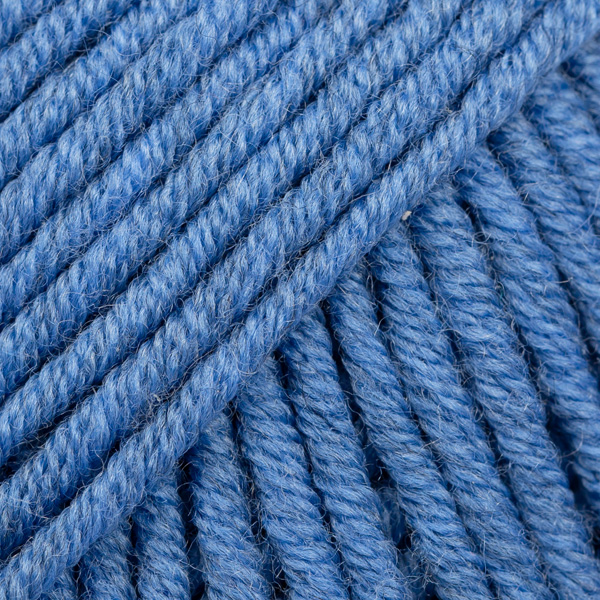











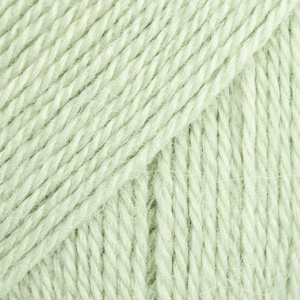






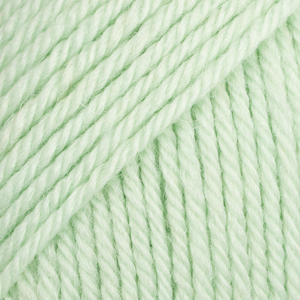








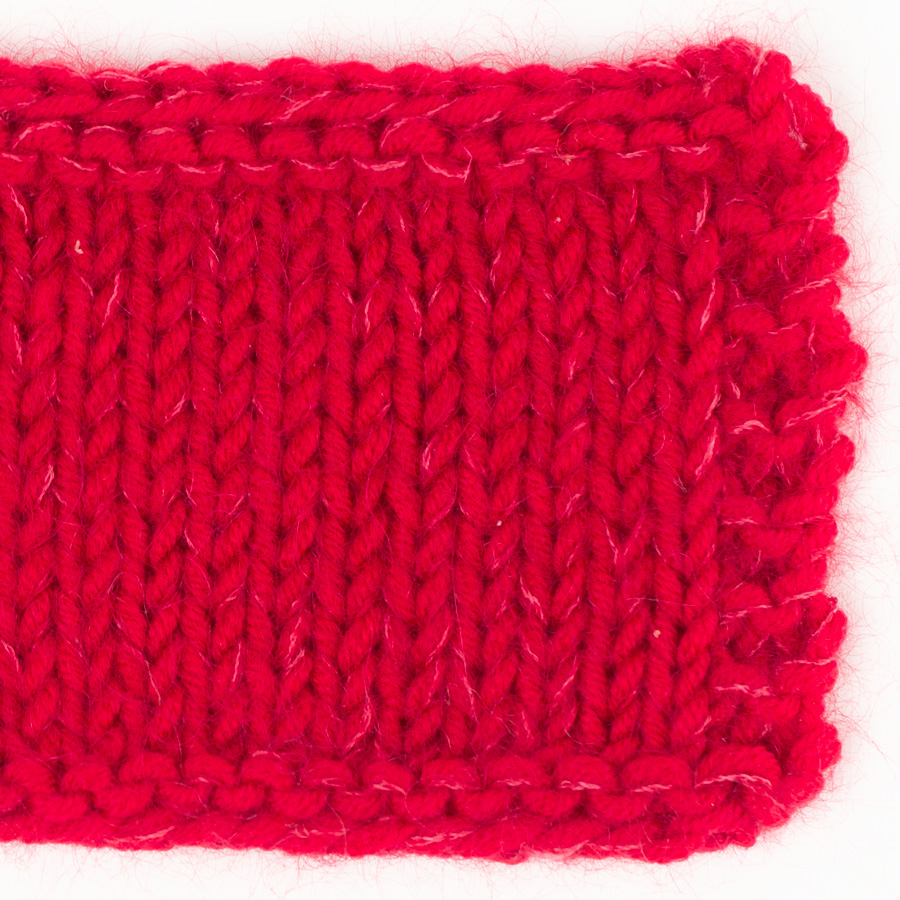
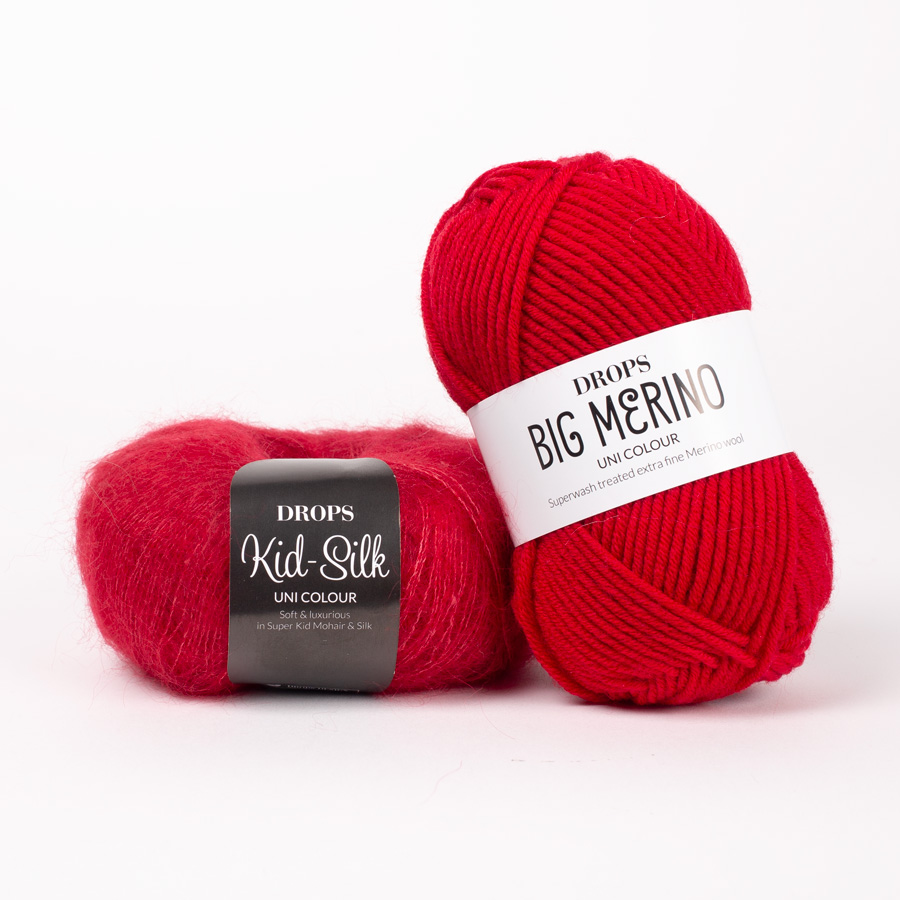

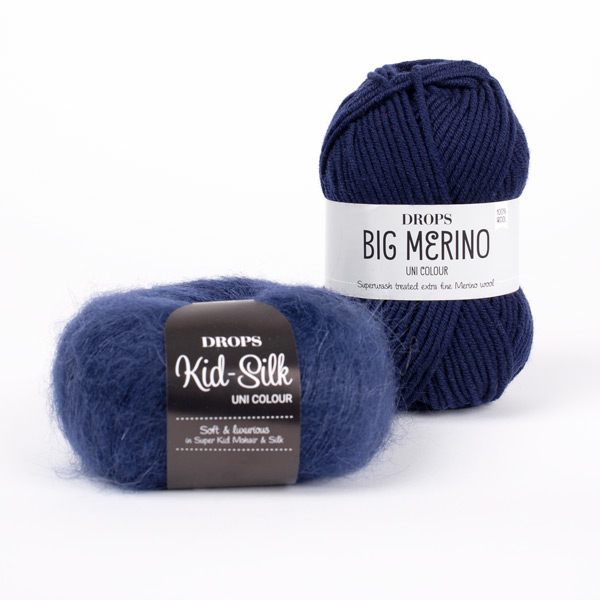
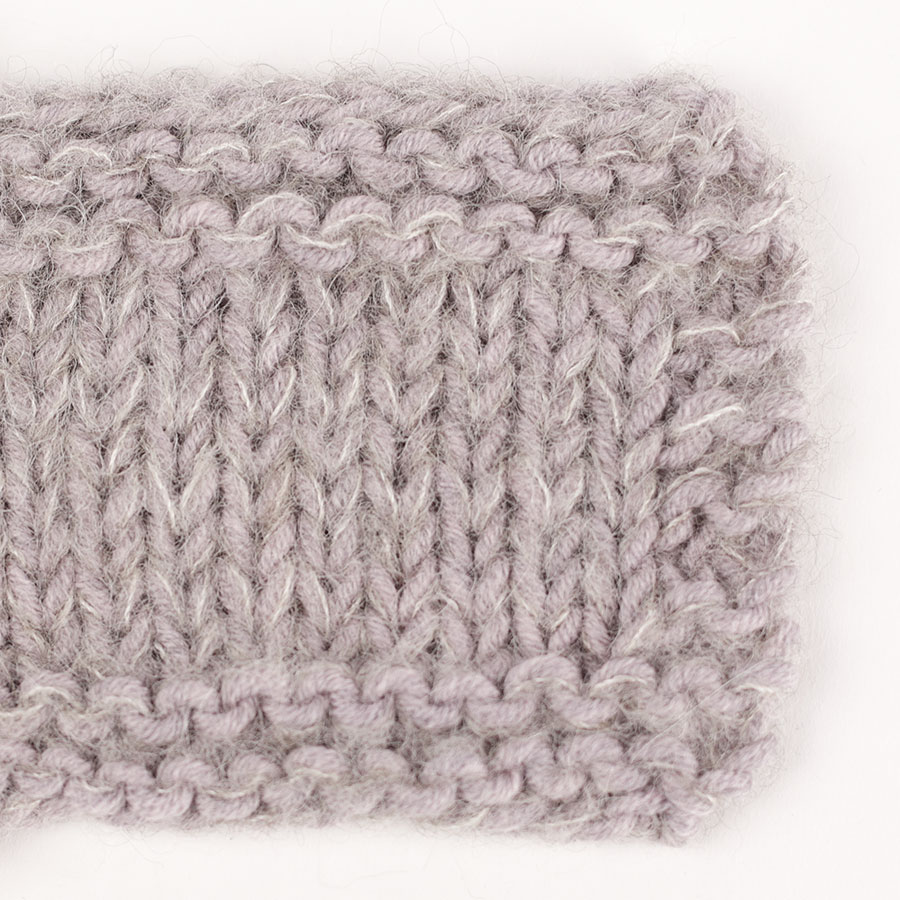
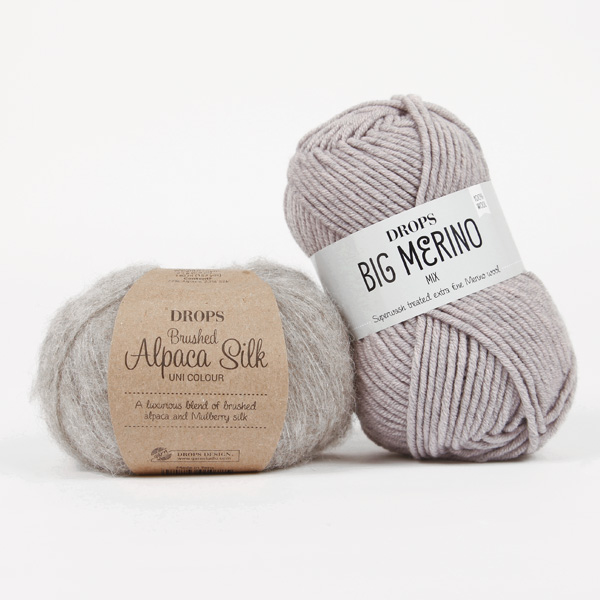









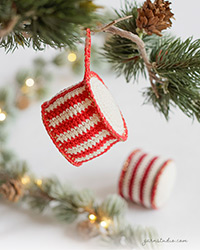





De acuerdo con una chica que comento mas abajo. He hecho una bufanda que antes de lavar estaba guapísima. Y después de lavarla se ha estirado bastante. Él hilo se ha quedado mucho mas fino. Da un poco de pena, porque pierde su grosor la prenda. Como un consejo, se puedo intentar hacer la prenda un pelón mas pequeña o muy justa antes de lavarla
19.11.2015 - 10:16